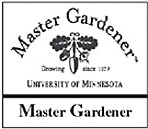October 9, 2003 at 11:15 a.m.
More on transplanting trees and shrubs
Last time I wrote about the difference between planting and transplanting trees and shrubs. I also wrote about what happens to a plant internally and externally when transplanting takes place. The research came from articles written by Gary Johnson, Professor of Urban and Community Forestry, at the U of M.
I also wrote that some plants are best and most successfully moved in the spring. However, there is little documented research that shows dramatic success or failure rates regarding when one transplants.
Look around the site before you decide to transplant. Don't plant in a site where the tree or shrub when fully grown can interfere with utility lines or views from windows. Don't fool yourself by thinking that regular pruning can keep the plant size in check because it's hard on the plant and so easy to forget to do it.
Also, don't transplant too close to a foundation, driveway or sidewalk, I planted some marigolds next to a new patio. Before the summer was over they were leaning away from the cement. These are annual plants so you can imagine what will happen if a tree or shrub is planted too close to a building.
There is a misconception by our readers that because I write most of the articles I am an expert. You only have to look at how I transplanted some trees to realize that this isn't true. Some years ago I transplanted some young sugar maples to replace some elms. One of them is too close to a beautiful white pine, I never thought that that pine would reach a height of over 60 feet.
Another tree has a beautiful canopy which is dripping water over the roof of the house, not a good idea. I made other mistakes but that is not the reason for this article.
Whenever you transplant, include as many roots as possible. If you root-pruned the tree or shrub at least one season before the move, the plant now has a much more concentrated root system in a more confined area. This means that you will be able to move a much more extensive root system.
The way it is moved depends on the species and size.
Bare-root transplanting is just as the term implies. This means that the plant's root system has little or no soil attached. This is the preferred method because the plant is much lighter and easier to move around. Also, any root problems can be seen and corrected and one can move a tree or shrub with a larger root system.
The caliper of a tree is the thickness of the stem which is measured approximately six inches about the ground line. It is usually not recommended that you move conifers or trees with a caliper more than two inches in diameter.
When you are transplanting, dig down a few inches beyond that root-pruning trench that you dug a season ago. You will hit some new roots, but the majority of the roots will be contained within the diameter of the root-pruned area. If you are like me, you didn't plan ahead by doing root-pruning. In that case try to see as many roots as you can. As you are digging down, pry the shovel to lift the roots and loosen the soil. Loosen the soil within the diameter of the new trench. If the soil is very dry, it sometimes helps to moisten it a few inches deep the day before you dig.
Professor Johnson's choice to lift the plant out is a potato fork. It is similar to a short pitchfork with broad and flat tines. Since you don't want to cut all the roots off, just loosen the soil from them so the plant can be lifted.
If there are any roots growing down, slip under the root mass with your shovel or use a lopper to cut those roots. Now the plant should be free from the growing site and you can shake most of the remaining soil off.
Keep the roots moist. Immediately after freeing the plant from the soil, heel it back in with loose soil and moisten it. An alternative would be to cover the roots with wet straw or wood chips and cover with a tarp or plastic, as the roots can dry out and die when exposed to air.
The major bullet to successful transplanting is water. The newly moved plant needs enough water to keep the roots moist from the time you begin digging until the tree or shrub is safely beyond transplant shock. This could take as long as a year. Some of the trees and shrubs that transplant well in the early fall include: barberry, holly, pine trees, yews and hemlock.




Comments:
Commenting has been disabled for this item.